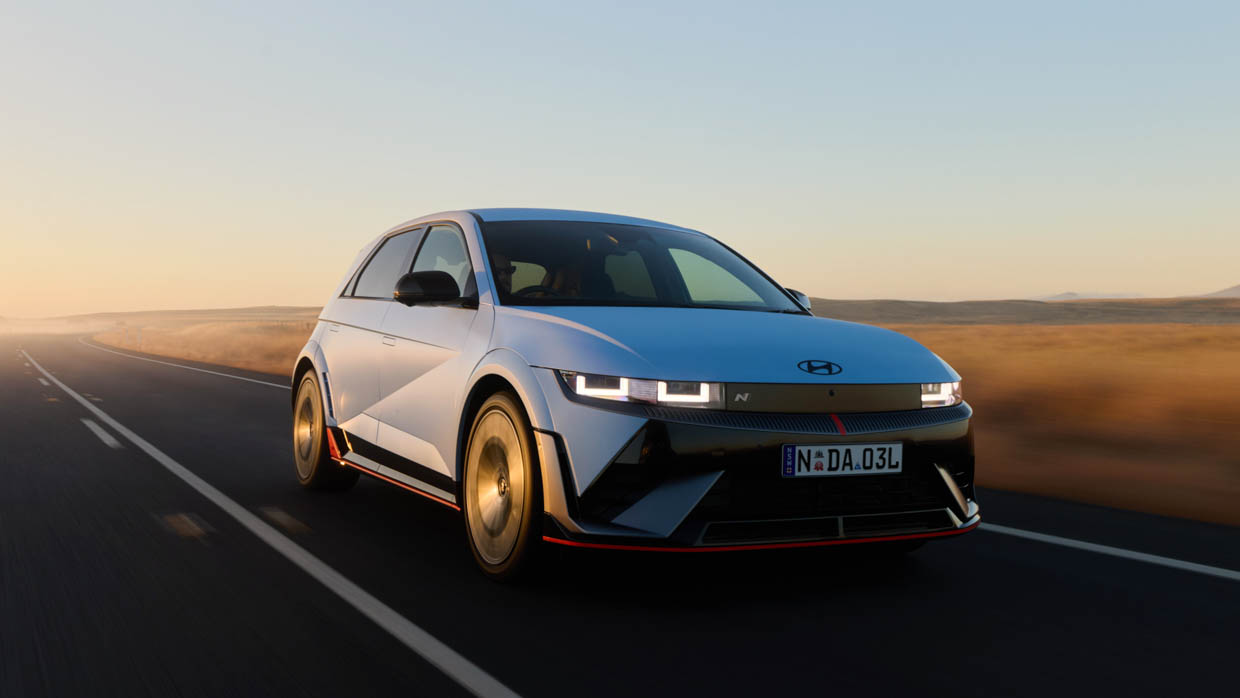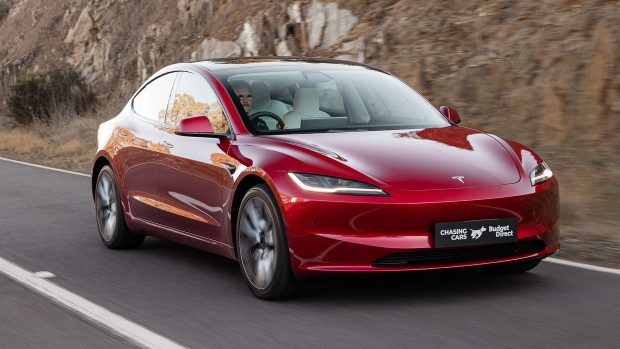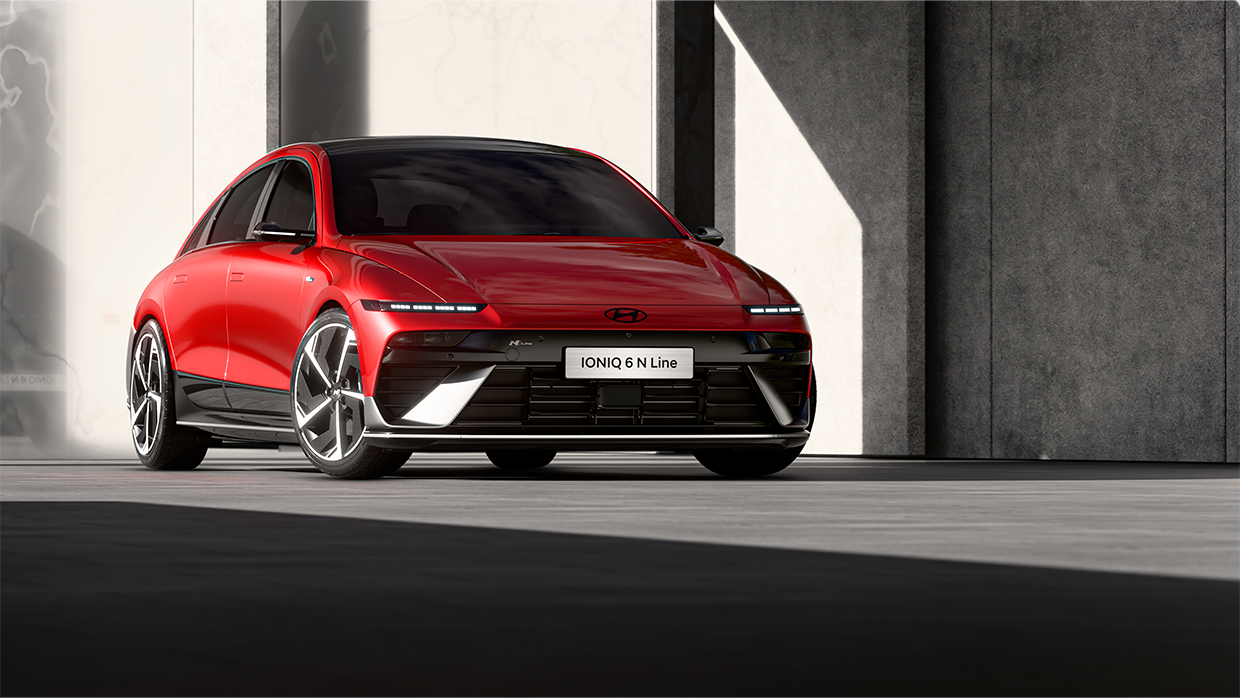-
Car Reviews
- Car News
-
Car Comparisons
Latest comparisons
- Chasing Deals
Hyundai’s electrified streamliner has been given a nip and tuck to make it more palatable to buyers, with a full-fat N variant also now confirmed.
Three years after it launched in its home market of South Korea, the Hyundai Ioniq 6 fully-electric sedan has received a comprehensive facelift that slims down visual details while further emphasising the model’s commitment to aerodynamic efficiency.
Dubbed by its maker as the “electrified streamliner”, the revised Ioniq 6 ditches the original version’s large headlight assemblies for considerably more avantgarde split units combining a thin daytime running light above a neat main beam assembly.
Flatter bonnet styling presents as more of a two-dimensional shape while the front apron loses its previous vertical canards to emphasise the width of the sedan.
Plus, a new N Line version joins the global range in a bid to build consistency across Hyundai’s models and to provide a more assertively-detailed alternative to the standard version.
At the rear, the convoluted spoiler design of the original Ioniq 6 has been replaced by an extended ducktail, while radical alloy wheel designs feature across the facelifted range.
Nearly all of the resources expended on the facelift have been focussed on cleaning up the exterior design, with minimal changes to the Ioniq 6 cabin taking in steering wheel and door trim material alterations and the addition of a larger climate control panel.
The incoming N Line’s reign at the top of the Ioniq 6 lineup will be short-lived, however, as the existence of the Hyundai Ioniq 6 N has been today confirmed for the first time—previously, it was only teased (extensively) through the existence of the RN22e prototype version.
Hyundai Motor Company Australia (HMCA) has already confirmed that it will bring the Ioniq 6 N to Australia as an “important halo model”. The car will be fully revealed in mid-2025 and will reach Aussie shores in early 2026. It will use core Ioniq 5 N mechanicals.
That will be about six months after HMCA launches the facelifted Ioniq 6 in Australia in the second half of 2025. The N Line version has not been locked in at this stage but may join the range at launch, or later.
HMCA concedes that the Ioniq 6 is a relatively slow seller for the brand and that there remains considerable stock of the sedan on the ground in Australia. It’s likely that further price cutting will be seen to clear that stock ahead of the arrival of fresh metal.
Since launch the Ioniq 6 sedan has been a niche vehicle for Hyundai in Australia, with its 2024 and 2023 delivery numbers (374 and 623 respectively) dwarfed almost fiftyfold by those of its chief rival, the Tesla Model 3 (17,094 and 17,347).
Yet the Ioniq 6’s blend of real-world efficiency, supple ride quality, engaging dynamics and a high-quality cabin were enough to see it win the Chasing Cars Car of the Year title in 2023 in a reflection of its advancement.
Still, the Ioniq 6’s relatively high pricing in Australia (from $67,300 before on-road costs, or $73,300 BOCS for a long-range version) places it closer to premium competition than the omnipresent Tesla sedan (from $54,900 BOCS).
Whether the arrival of the facelift in Australia will coincide with a difficult—but perhaps necessary—decision to reposition the pricing of the “electrified streamliner” is not yet known.
A call might also be made to slim down the Ioniq 6 range locally, which currently sits at six variants spanning $67,300 to $86,500 BOCS with 53.0kWh and 77.4kWh batteries available to Australian customers along with a choice of rear-wheel drive and all-wheel drive.
The sibling to the Ioniq 6, the hatchback/SUV-shaped Ioniq 5, is faring about three times better in the Australian sales race with that model enjoying 933 local deliveries in 2024.
So far this year, the Ioniq 5 N ($110,383 BOCS) high-performance model which launched in Australia last year—and which shares key internals with the Ioniq 6 N—has found 57 Australian buyers in the first three months of 2025.
Latest news
About Chasing cars
Chasing Cars reviews are 100% independent.
Because we are powered by Budget Direct Insurance, we don’t receive advertising or sales revenue from car manufacturers.
We’re truly independent – giving you Australia’s best car reviews.



